In an era of streaming services mining nostalgic properties for new content, the 1980s represent a goldmine of dramatic television waiting to be rediscovered. This decade gave us groundbreaking shows that pushed boundaries with complex characters, innovative formats, and social commentary that remains relevant today. While “Magnum P.I.” and “MacGyver” have already received the reboot treatment, many iconic ’80s dramas continue to wait in the wings, their unique premises and storytelling approaches ripe for modern reimagining. Here are 14 television dramas from the Reagan era that deserve another moment in the spotlight—shows whose themes, characters, and concepts could resonate powerfully with today’s audiences.
1. St. Elsewhere (1982-1988)
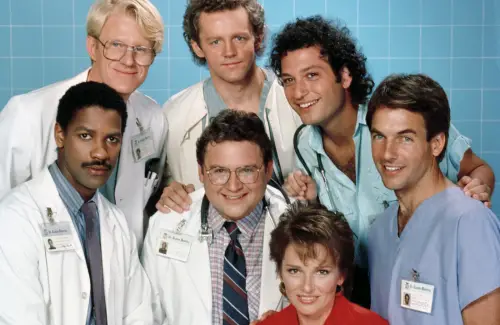
This pioneering medical drama set in the fictional, underfunded Boston teaching hospital St. Eligius (nicknamed “St. Elsewhere”) revolutionized television with its gritty realism and unflinching portrayal of urban healthcare challenges. The show’s ensemble cast—which helped launch the careers of Denzel Washington, Mark Harmon, and Helen Hunt—tackled controversial subjects like AIDS, addiction, and healthcare inequality decades before these became standard television fare. Los Angeles Times delves into the somber end to this unique, daring masterpiece.
A contemporary revival could explore America’s current healthcare crisis, examining issues like hospital staffing shortages, the opioid epidemic, telemedicine, and the stark disparities in healthcare access revealed by the COVID-19 pandemic. The original’s blend of medical cases, personal drama, and social commentary provides a perfect template for addressing today’s complex healthcare landscape, while the teaching hospital setting offers a natural way to introduce new characters alongside potential returning veterans from the original cast.
2. Cagney & Lacey (1981-1988)
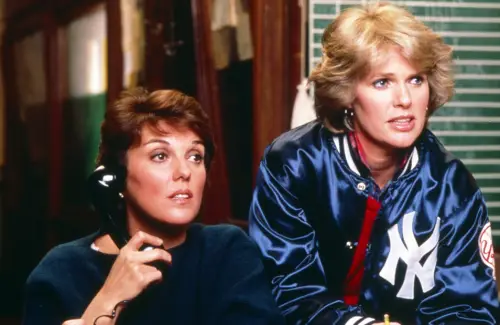
This groundbreaking police procedural centered on two female NYPD detectives—the ambitious, single Christine Cagney (Sharon Gless) and the working-class, married Mary Beth Lacey (Tyne Daly)—who navigated both tough cases and workplace sexism. The show won multiple Emmy Awards for its nuanced portrayal of female friendship and professional partnership in a male-dominated field, while addressing topics like breast cancer, abortion, and alcoholism. The powerful duo that led this remarkable show has been up to a bit, and for those looking to catch up, Screen Rant revisits the cast to see what they’re up to now.
A revival could examine how policing has evolved for women over the past 40 years while tackling contemporary issues like police reform, community policing approaches, and technology’s role in law enforcement. The original format—focusing on the personal and professional relationship between two contrasting female detectives—remains surprisingly rare on television and could provide a fresh perspective on current debates about the criminal justice system through the eyes of experienced women officers.
3. thirtysomething (1987-1991)

This introspective drama about a group of Philadelphia baby boomers navigating the challenges of adulthood, career pressures, and evolving relationships defined a generation’s anxieties. With its cinema-quality production values, realistic dialogue, and psychological depth, “thirtysomething” elevated television storytelling and captured the zeitgeist of late-’80s professional class America. A few years ago, The New York Times dove into a retrospective of “thirtysomething” at 40-something years.
A revival could follow original characters now in their sixties alongside their adult children (who would now be thirtysomething themselves), creating a multi-generational examination of how expectations and realities of adult life have shifted. Topics like retirement insecurity, healthcare concerns, adult children returning home, and the gig economy could provide rich dramatic territory, while the original’s groundbreaking technique of blending everyday moments with fantasy sequences and internal monologues would feel right at home in today’s prestige television landscape.
4. China Beach (1988-1991)
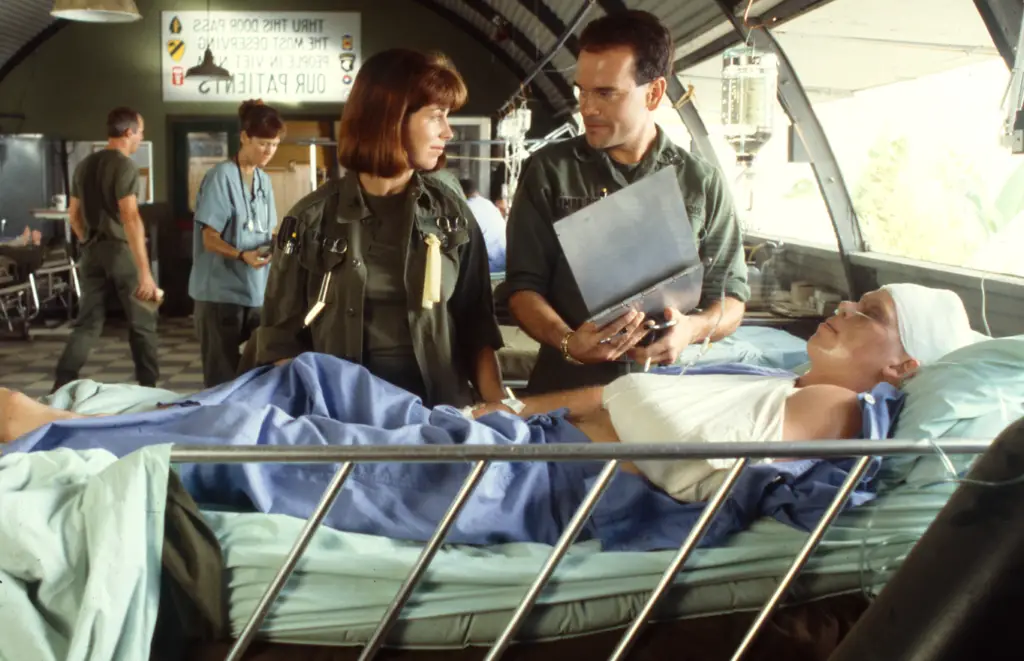
Set in an evacuation hospital during the Vietnam War, “China Beach” offered a revolutionary perspective by focusing on the women who served—nurses, entertainers, and support staff—rather than combat soldiers. Dana Delany starred as nurse Colleen McMurphy, with a strong ensemble cast portraying characters dealing with trauma, moral ambiguity, and moments of connection amid chaos.
A revival could maintain the original’s focus on military healthcare providers while shifting to more recent conflicts like Afghanistan or Iraq, or even exploring a military hospital unit during humanitarian crises or pandemic response. The show’s unflinching examination of war’s psychological impacts and its attention to the often-overlooked contributions of women in military contexts remains sadly relevant. The original’s non-linear storytelling, which moved between wartime and characters’ lives decades later, would provide a perfect structure for exploring long-term effects of service and trauma.
5. Wiseguy (1987-1990)
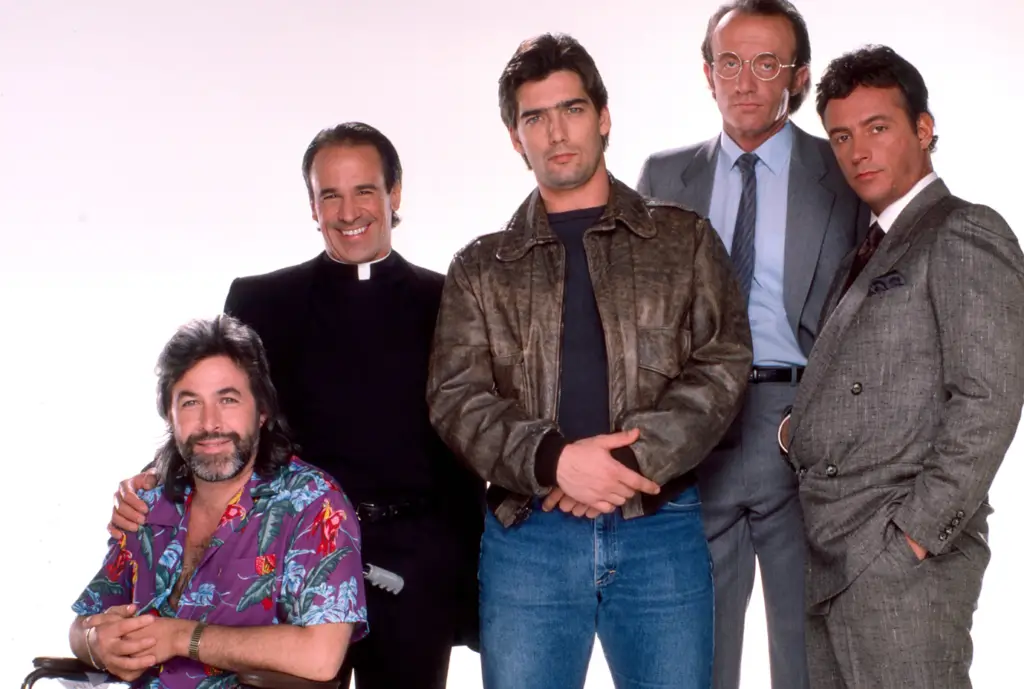
This innovative crime drama starred Ken Wahl as Vinnie Terranova, an undercover FBI agent who infiltrated criminal organizations for extended “arcs”—making it one of the first series to embrace serialized storytelling rather than case-of-the-week formats. The show’s deep dive into the psychology of both criminals and the agents pursuing them, along with morally complex scenarios where Vinnie formed genuine connections with targets, set new standards for crime dramas.
A revival could explore undercover work in today’s complex criminal landscapes—from white-collar financial crimes and corporate corruption to domestic terrorism networks and transnational criminal organizations. The original’s exploration of the psychological toll of living a double life and the blurring lines between law enforcement and criminality feels especially relevant in an era of increased scrutiny of law enforcement tactics. The arc-based structure would fit perfectly with modern streaming formats.
6. Beauty and the Beast (1987-1990)
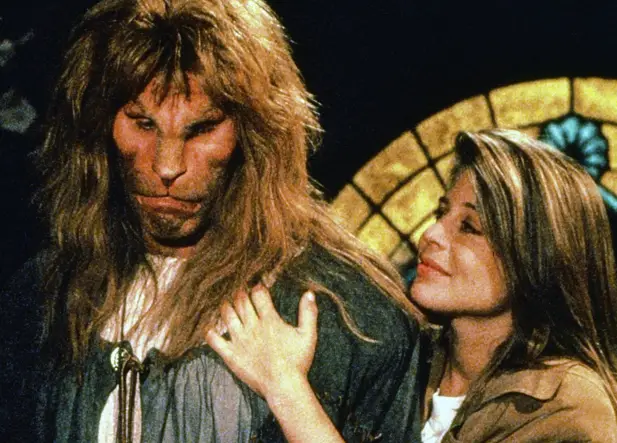
This urban fantasy romance starred Linda Hamilton as Catherine Chandler, a Manhattan assistant district attorney, and Ron Perlman as Vincent, a lion-faced man living in a secret community beneath New York City. Their impossible romance unfolded alongside cases that often connected Catherine’s legal work with Vincent’s protection of society’s outcasts and forgotten people.
A contemporary revival could maintain the original’s unique blend of procedural, romance, and fantasy while updating its exploration of divided societies and found families. The contrast between wealth and poverty in urban America, alongside themes of accepting difference and finding connection across seemingly insurmountable barriers, remains powerfully relevant. Modern special effects could enhance the fantasy elements while keeping the emotional core that made the original series so beloved by its dedicated fanbase.
7. The Equalizer (1985-1989)
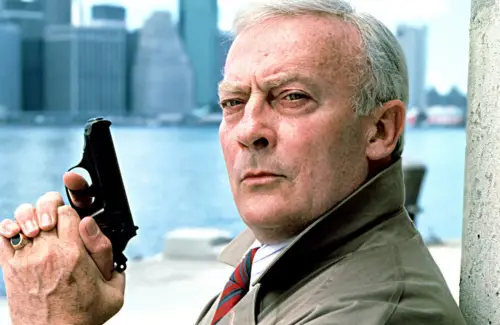
Before the Denzel Washington films and Queen Latifah’s current revival, Edward Woodward starred as Robert McCall, a former covert operations officer who atoned for his past by offering his services free of charge to those in need of justice. The atmospheric New York-set drama combined vigilante action with moral complexity as McCall navigated his shadowy past while helping ordinary people facing extraordinary threats.
While there is a current revival starring Queen Latifah, a different approach could focus on a retired operative from more recent conflicts returning to civilian life with both skills and moral burdens, perhaps dealing with contemporary issues like online harassment, corporate malfeasance, or immigration challenges. The original’s exploration of redemption, justice outside the system, and the moral cost of violence continues to resonate, while the procedural-with-mythology format offers flexibility for episodic storytelling with character depth.
8. Tour of Duty (1987-1990)
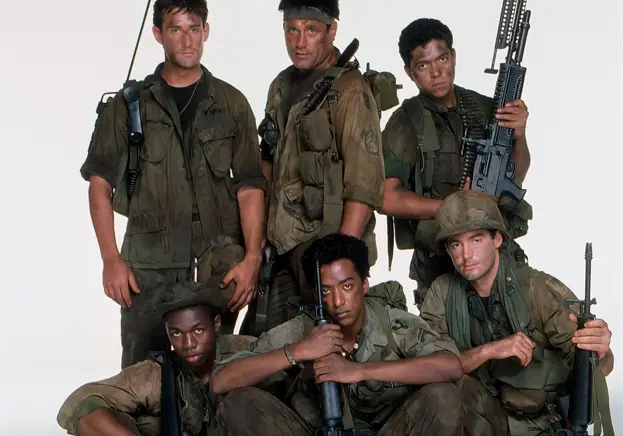
This military drama followed a single American infantry platoon through their tour in Vietnam, offering a ground-level view of the conflict that balanced action with thoughtful examination of war’s human costs. With its diverse cast and willingness to present the complexities and moral ambiguities of combat, the show avoided both glorification and simple condemnation of the soldiers’ experiences.
A revival could apply the same approach to more recent conflicts, following a unit through deployment in Iraq or Afghanistan while examining the unique challenges of contemporary warfare—from unclear objectives and shifting alliances to the impact of modern technology and media coverage. The ensemble format allows exploration of diverse perspectives while the focus on a single unit creates natural dramatic stakes. As America continues processing the legacies of its 21st-century conflicts, such a show could offer valuable reflection.
9. Highway to Heaven (1984-1989)
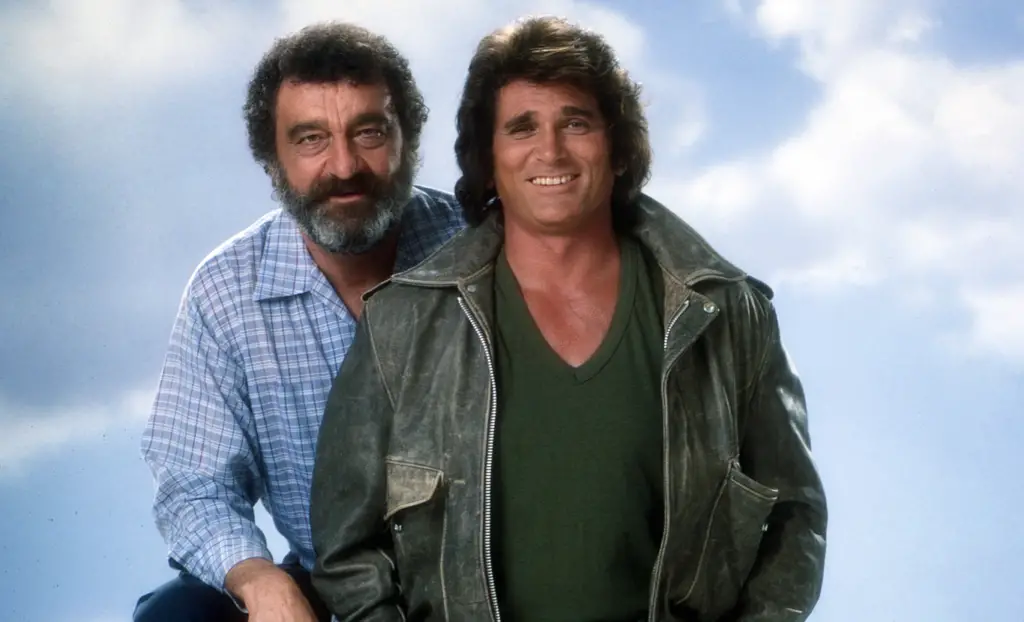
This unique dramatic series starred Michael Landon as Jonathan Smith, an angel sent back to Earth as a probationary angel who, alongside ex-cop Mark Gordon (Victor French), traveled America helping people through personal crises and moral dilemmas. With its blend of spiritual themes and contemporary social issues, the show offered hopeful messages while addressing serious topics like racism, addiction, and terminal illness.
A revival could maintain the original’s optimistic approach while tackling today’s divisions and challenges, perhaps with a more diverse angel team and an updated theology reflecting our multi-faith society. The road-story format—with protagonists arriving where needed most—provides a perfect vehicle for exploring different communities and social issues across America. In an era often defined by cynicism and division, a thoughtful, hopeful series exploring human connections and second chances could find a receptive audience.
10. Moonlighting (1985-1989)
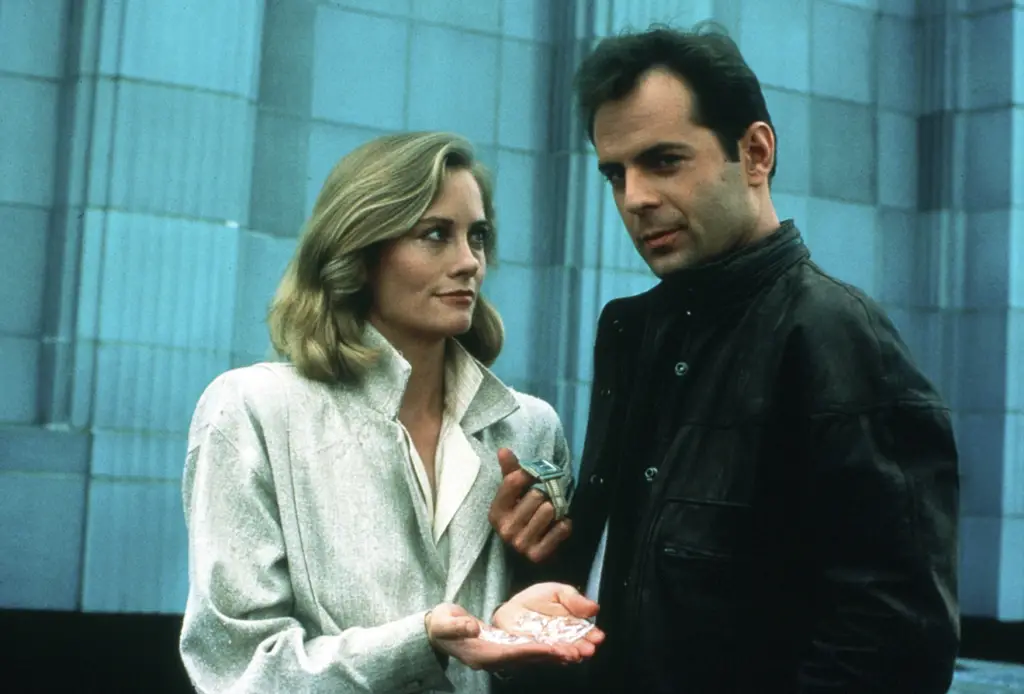
This groundbreaking detective comedy-drama starring Cybill Shepherd and Bruce Willis as bickering private investigators at the Blue Moon Detective Agency revolutionized television with its blend of film noir aesthetics, screwball comedy dialogue, fourth-wall breaking, and unresolved sexual tension. Despite its troubled production and infamous decline after its leads became a couple, the show’s innovative approach to genre-bending storytelling and meta-commentary influenced decades of television.
A revival could recapture the original’s playful deconstruction of detective tropes while adding contemporary commentary on gender dynamics and workplace relationships. The detective agency setting allows for case-of-the-week accessibility while the focus on complicated personal dynamics provides serialized depth. Modern sensibilities about workplace romance and power dynamics could add interesting layers to the original formula, while the show’s formal experimentation—dream sequences, musical episodes, period pastiches—would feel right at home in today’s more adventurous television landscape.
11. L.A. Law (1986-1994)
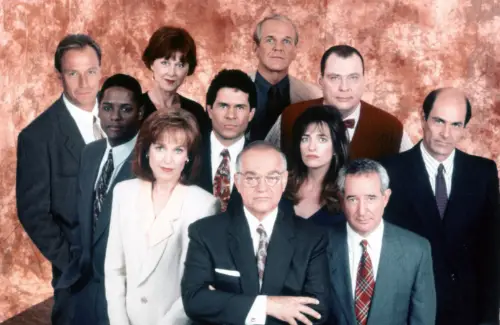
This legal drama created by Steven Bochco followed the personal and professional lives of attorneys at the Los Angeles firm McKenzie, Brackman, Chaney and Kuzak, balancing courtroom drama with office politics and the personal entanglements of its large ensemble cast. The series tackled controversial legal and social issues while delivering sophisticated entertainment that helped define NBC’s must-see TV lineup.
A revival could return to the original firm, now navigating a radically changed legal landscape affected by technology, changing social attitudes, and evolving interpretations of justice. The large-firm setting allows exploration of diverse legal areas—from intellectual property and entertainment law to immigration and civil rights—while the ensemble format permits examination of various personal backgrounds and perspectives. Contemporary issues like cancel culture, corporate accountability, and restorative justice could provide compelling cases that reflect current social debates.
12. Crime Story (1986-1988)
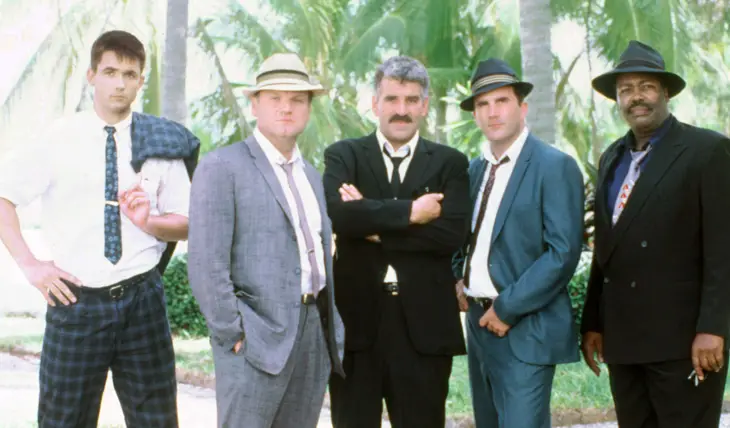
This stylish period crime drama created by Michael Mann followed Lt. Mike Torello (Dennis Farina) of the Chicago Police Department’s Major Crime Unit as he pursued organized crime figure Ray Luca (Anthony Denison) across 1960s America. With its noir aesthetic, serialized storytelling, and attention to period detail, the show elevated the crime genre with cinematic production values and complex moral questions.
A revival could maintain the period setting while moving to a new era—perhaps the 1970s or 1980s—examining how organized crime evolved to meet changing times. Alternatively, it could follow new characters in the original 1960s setting, exploring different aspects of the era’s social upheaval and criminal underworld. The cat-and-mouse structure provides natural dramatic tension, while the period setting allows exploration of historical contexts that shaped contemporary crime and law enforcement challenges.
13. Alien Nation (1989-1990)
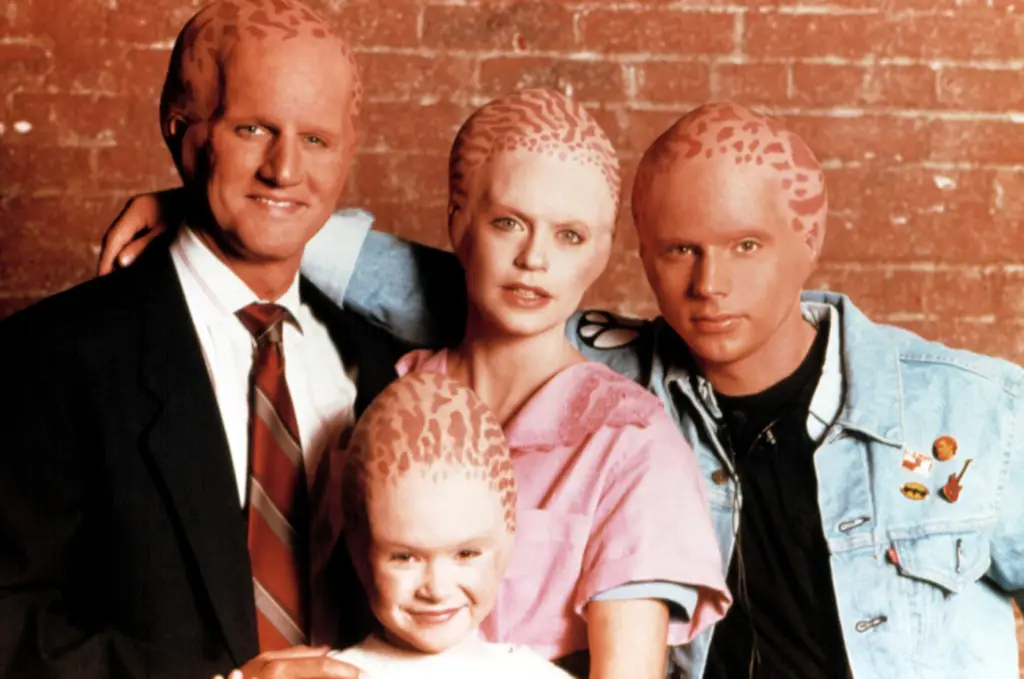
Set in near-future Los Angeles where 300,000 alien “Newcomers” have integrated into human society after landing on Earth, this science fiction police procedural paired a human detective with a Newcomer partner to solve crimes affecting both communities. Beyond its case-of-the-week format, the show used its premise to explore prejudice, assimilation, and cultural identity through the lens of science fiction.
A revival is particularly well-positioned for our current moment, offering allegorical exploration of immigration, cultural integration, and systemic bias. The police partnership format provides accessible entry points for audiences while the science fiction elements allow examination of difficult social issues with some metaphorical distance. Updated special effects and a contemporary understanding of these social dynamics could enhance the original concept while maintaining its balance of genre entertainment and thoughtful commentary.
14. Frank’s Place (1987-1988)

This critically acclaimed but short-lived dramedy starred Tim Reid as Frank Parrish, a Boston professor who unexpectedly inherits a restaurant in New Orleans and becomes immersed in the city’s unique culture. Notable for its distinct visual style, absence of laugh track, and thoughtful exploration of race, class, and Southern culture, the series was ahead of its time in its nuanced portrayal of Black life and regional American experiences.
A revival could return to the original restaurant setting—perhaps with Frank’s child or another relative taking over—while continuing to explore New Orleans’ rich cultural landscape and the challenges facing both the city and independent restaurants in the 21st century. The “fish out of water” premise provides accessible entry points for audiences, while the setting allows exploration of gentrification, cultural preservation, and community resilience in the face of both natural disasters and economic pressures. The original’s unique tone—balancing humor with dramatic depth—would stand out in today’s television landscape.
As streaming services continue seeking distinctive content with built-in audience recognition, these ’80s dramas offer rich territory for reimagining. The best revivals would preserve the elements that made these shows revolutionary—complex characters, innovative storytelling approaches, willingness to tackle difficult subjects—while updating their premises to reflect contemporary realities. Rather than mere nostalgia exercises, these potential series could follow the example of successful reboots like “Battlestar Galactica” or “One Day at a Time,” using familiar frameworks to tell new stories that resonate with both original fans and viewers discovering these worlds for the first time.


